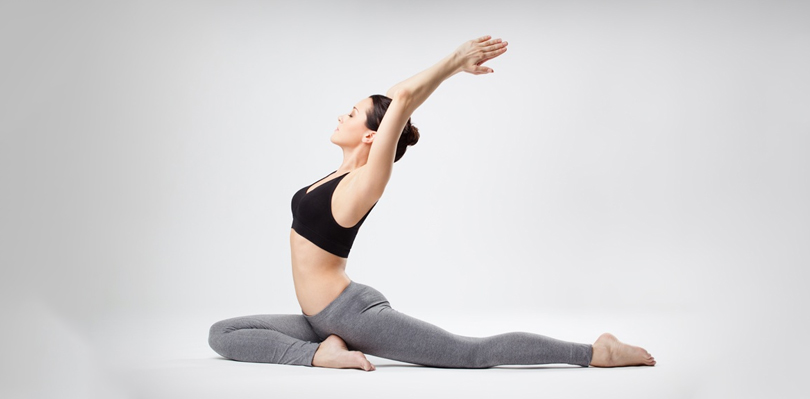Yoga is a natural and effective method to address various health concerns, including fatty liver disease. This condition occurs when the liver accumulates excess fat, which can lead to serious complications if not treated. However, practicing yoga regularly can help alleviate the effects of fatty liver and promote overall liver health.
Causes Of Fatty Liver
Fatty liver is also known as hepatic steatosis. It occurs due to extreme accumulation of fat in liver cells. Basically, there are two major types of fatty liver: alcoholic fatty liver and non-alcoholic fatty liver. Here are the primary causes of both types:
Alcoholic Fatty Liver
Chronic and excess consumption of alcohol is the main cause of alcoholic fatty liver. The liver metabolizes alcohol, and over-intake can slow down the liver’s capacity to process it. This leads to fat accumulation.
Non-Alcoholic Fatty Liver Disease:
In this type, fat accumulates without excessive alcohol consumption. It is often associated with the following risk factors:
- Obesity is a notable risk factor for this type. Extra body fat, mainly around the stomach, can lead to the gathering of fat in the liver.
- Insulin resistance and type 2 diabetes are closely related to this type. When your body resists insulin, it can result in excess fat storage in your liver.
- A diet high in sugar, particularly fructose, and unhealthy fats can aid in fat assembly in the liver.
- Rapid weight loss or harsh dieting can result in the release of accumulated fat. Due to this, the liver may struggle to process and cause fatty liver.
- Metabolic syndrome and abnormal lipid levels are often associated with NAFLD.
- Some medications including corticosteroids, tamoxifen, and antiretroviral drugs, can raise the chances of fatty liver.
- Genetics can play a role in an individual’s vulnerability to NAFLD.
Yoga For Fatty Liver

Yoga is gaining more recognition for its potential to boost liver health and aid people who are coping with conditions such as fatty liver disease. Although yoga cannot substitute medical treatment, it can serve as a beneficial supplementary practice to assist in managing this condition. Here are some yoga poses and techniques that may be advantageous for individuals with fatty liver:
Paschimottanasana (Seated Forward Bend)
The Seated Forward Bend, or Paschimottanasana, is a classic yoga pose that involves folding forward while sitting. This pose stretches the entire back of the body, including the spine, hamstrings, and calves. It can also aid in stimulating the abdominal organs, particularly the liver, and is known for its calming and rejuvenating effects.
Benefits:
- Paschimottanasana can gently massage and stimulate the liver, promoting detoxification and better liver function.
- This pose can aid in digestion by compressing the abdominal area, which enhances digestive processes.
- Regular practice can increase flexibility in the spine, releasing tension in the back.
- It can calm the nervous system, reducing stress and anxiety.
How to do Paschimottanasana:
- Begin by sitting with your legs extended straight in front of you, keeping your feet flexed and toes pointing up.
- Lengthen your spine while ensuring your pelvis is grounded on the floor.
- Take a deep inhale to prepare.
- On the exhale, hinge at your hips and begin to fold forward from your pelvis, leading with your chest.
- Reach forward with your arms, aiming to touch your toes, ankles, or shins. If you can’t reach your feet, hold onto your calves or thighs.
- Maintain the forward bend while breathing deeply and evenly. Try to relax into the pose with each exhale.
- Keep your back as flat as possible, aiming to bring your belly toward your thighs rather than rounding your back.
- Hold the pose for 20-30 seconds, gradually increasing the duration as you become more comfortable.
- To exit the pose, inhale and slowly rise back up to a seated position.
Ardha Matsyendrasana (Half Lord of the Fishes Pose)
The Half Lord of the Fishes Pose, known as Ardha Matsyendrasana, is a seated yoga pose that combines both stretching and twisting. It is believed that this pose can help cleanse the body of toxins, which is especially beneficial for individuals with fatty liver disease.
Benefits:
This pose has several benefits, including:
- promoting digestion by massaging the abdominal area, which can be helpful for those with fatty liver disease.
- Twisting poses like Ardha Matsyendrasana also has a calming effect on the nervous system, reducing stress and anxiety, which is crucial for liver health.
- The twisting motion of this pose can also help stimulate the liver and other abdominal organs.
How to do Ardha Matsyendrasana:
- To perform Ardha Matsyendrasana, start by sitting with your legs extended in front of you and bending your knees with your feet on the floor.
- Place your right foot beside your left knee with your right knee pointing up, and keep your right foot close to your left hip.
- Sit up straight, elongating your spine, exhale, and twist your torso to the right, placing your left elbow on the outside of your right knee.
- Put your right hand behind you with fingertips touching the floor, and turn your head to the right, looking over your right shoulder.
- Maintain this position for 20-30 seconds, breathing deeply, and avoid forcing a deep twist. Inhale and release the twist, returning to the center.
- Repeat on the other side with your left foot over your right thigh.
- After both sides, extend your legs straight in front of you.
Viparita Karani (Legs Up the Wall Pose)
The Legs Up the Wall Pose, also known as Viparita Karani in yoga, involves lying on your back with your legs resting vertically against a wall. This gentle posture promotes relaxation, reduces stress and anxiety, and improves circulation. While it does not directly target the liver, it indirectly supports liver health by reducing stress and supporting overall well-being.
Benefit:
The benefits of Viparita Karani include:
- Calming the mind
- Reducing stress and anxiety
- Promoting better sleep quality, and alleviating lower back discomfort and tension.
These benefits can positively impact liver health, making this pose an excellent addition to a healthy routine.
How to do Viparita Karani:
- To perform Viparita Karani, find an open wall space and sit with your right side against the wall.
- Lying on your back, swing your legs up the wall while keeping your buttocks as close to the wall as comfortable, and extend your legs straight up.
- Place your hands on your abdomen or by your sides, palms facing up, and close your eyes.
- Gently relax your facial muscles, neck, and shoulders, and let your arms and legs be heavy.
- Focus on deep, mindful breathing, inhaling and exhaling slowly and steadily.
- Stay in this pose for 5-15 minutes or as long as it feels comfortable and relaxing.
- To exit the pose, slowly bend your knees, roll to one side, and gently sit up.
Note: If you have any medical condition, such as glaucoma, high blood pressure, or any serious neck or back problems, consult with your doctor or a yoga instructor before practicing these poses.
FAQs
Are there symptoms of fatty liver disease?
In its early stages, fatty liver often shows no signs. As the disease progresses, people may experience exhaustion, abdominal pain, and in more severe cases, jaundice, and liver inflammation.
What is fatty liver disease?
Fatty liver disease is a disorder marked by the accumulation of extra fat in the liver cells. It is generally classified as either alcoholic fatty liver (AFL) or non-alcoholic fatty liver disease (NAFLD).
How often should I practice yoga for fatty liver?
The frequency of the yoga routine can vary from person to person. Starting with 2-3 sessions per week and gradually increasing the frequency as you become more comfortable is a good approach.

